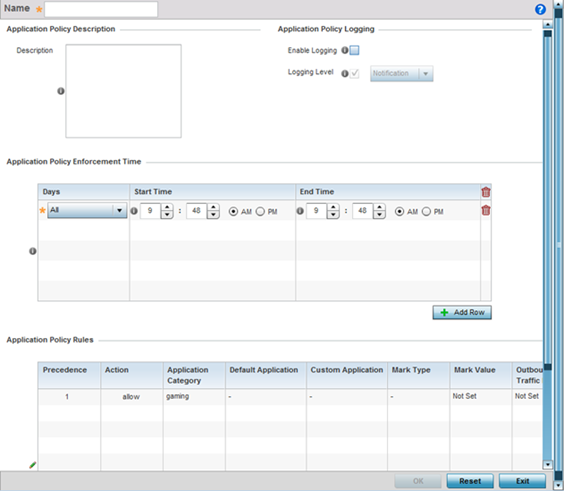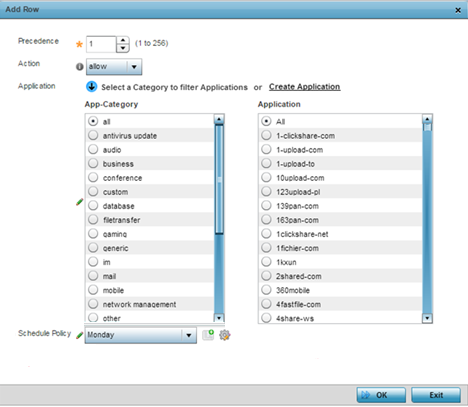Create an Application Policy
About this task
- Allow - Allow packets for a specific application or application category
- Deny - Denies packets for a specific application or application category
- Mark - Marks packets with DSCP/8021p value for a specific application or application category
- Rate-limit - Rate limits packets from specific application types
For each rule defined, a precedence is assigned to resolve conflicting rules for applications and categories. A deny rule is exclusive, as no other action can be combined with a deny. An allow rule is redundant with other actions, since the default action is allow. An allow rule is useful when wanting to deny packets for a category, but wanting to allow a few applications in the same category to proceed. In such cases, add an allow rule for applications with a higher precedence then a deny rule for that category.
Mark actions mark packets for a recognized application and category with DSCP/8021p values used for QoS. Rate limits create a rate-limiter applied to packets recognized for an application and category. Ingress and egress rates need to be specified for the rate-limiter, but both are not required. Mark and rate-limit are the only two actions that can be combined for an application and category. All other combinations are invalid.

Note
Extreme Network's AP5xx model APs, running WiNG 7.1.2 and later versions of the WiNG 7 OS, use Purview™ libDPI engine to implement Application Visibility and Control (AVC) within a managed network. libDPI detects top-level hosting applications along with the services these applications host. Refer to the WiNG 7.2.1 CLI Reference guide for information on Purview Application policy and group.To define an application policy configuration:






